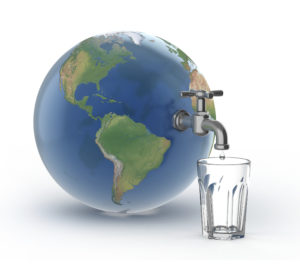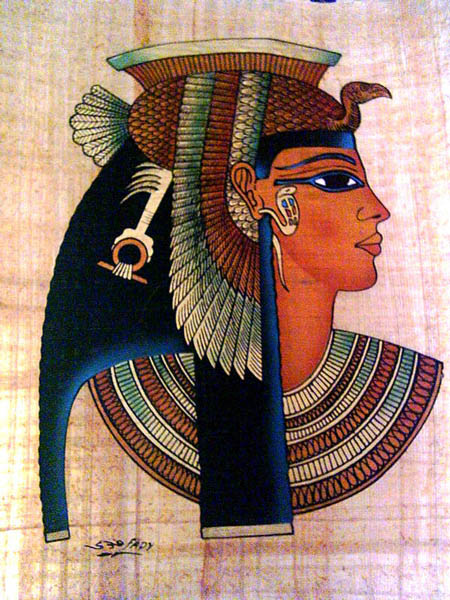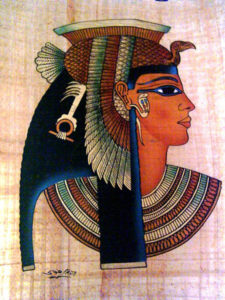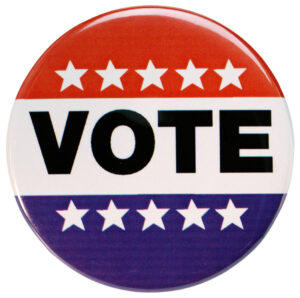
One person of every three on the planet today isn’t nearly so fortunate, according to the International Water Management Institute, because they lack reliable access to fresh water. Even here in the U.S., the federal Government Accountability Office reported in 2003 that “water managers in thirty-six states anticipate water shortages locally, regionally, or statewide within the next ten years.”
The rest of the world looks equally thirsty. By 2025, worries the Water Management Institute, all of Africa and the Middle East, and almost all of South and Central America and Asia, will either be running out of water or unable to afford its cost.
Dirty Water Kills Kids
They’ll also be contending with its safety. “Every day more children die from dirty water than HIV-AIDS, malaria, war, and accidents all put together,” says Maude Barlow, co-author of Blue Gold: The Fight to Stop the Corporate Theft of the World’s Water. According to a 2003 survey by the European Environment Agency, nitrates, toxins, heavy metals and/or harmful microorganisms contaminate ground water in nearly every European country and former Soviet republic.
There is no “new water.” We are essentially using the same water Cleopatra used 2,000 years ago. But we’re using a lot more of it:
If today is an average day, you’ll probably use about 90 gallons of water just for today – which amounts to about 107,000 gallons for the year: enough to fill your bathtub almost 3,000 times.
We use water to grow lawns, wash dishes, rinse food, shower and shave, and let the tap run when we brush our teeth. About 14 percent leaks down the drain.
Older toilets waste more clean water in a single flush than many Africans use in an entire day.
Only 1 percent of all the world’s water can be used for drinking.
Nearly 97 percent of the world’s water is salty and otherwise undrinkable. The other 2 percent is locked up in the ice caps and glaciers.
What if You’re Pregnant?
In the U.S., we count on our tap water to be safe, and for the most part it is. The U.S. Environmental Protection Agency sets standards for approximately ninety contaminants in drinking water. Outbreaks from microbial contamination — the kind that give you a stomach ache or diarrhea — are rare, given how many people are serviced by the public drinking water system. The bigger issue revolves around chemicals that wastewater treatment facilities weren’t designed to remove. The common fertilizer ingredient nitrate, for example, can seep into drinking water through runoff from lawns, gardens, and agricultural fields, causing “blue baby syndrome” if it depletes a newborn baby’s hemoglobin. Pregnant and nursing women and the elderly should also avoid water that’s high in nitrate content.
Bottled Water is Not the Solution
Bottled water won’t be the solution. Since so much “bottled” water is actually tap water, there’s no guarantee there’ll be enough to go around. And as we’ve discussed here before, bottling water in plastic, throwaway bottles creates a whole host of environmental problems that are better left alone.
All Those Drugs, All Those Weird Fish
Pharmaceuticals — including painkillers, depression medication, and birth control drugs — and endocrine-disrupting chemicals from deodorants, shampoos, body soaps, and lotions are also roiling America’s freshwater supplies. The cumulative effect of trace amounts of these chemicals has the EPA concerned, given their links to behavioral and sexual mutations in fish, amphibians, and birds. Part of the problem is that consumers flush old and unwanted drugs down toilets or drains. Another factor is the sheer volume of pharmaceuticals and personal-care products entering our waterways. In a U.S. Geological Survey/EPA study of 139 streams in 30 states, pharmaceuticals were found in 80 percent of the samples taken.
These aren’t benign elements. According to a 2006 analysis by the U.S. Geological Survey, “previously banned compounds…such as DDT and chlordane, natural and anthropogenic hormones, herbicides, fungicides, industrial chemicals” and other compounds that might act as endocrine disrupters lead to aberrations like both male and female sex organs turning up on the same fish.
Nasty Chemicals in the Water, Learning Disabilities in Kids?
The National Academy of Sciences is worried, too. Its list of “naturally occurring and man-made contaminants in drinking water of concern to all of us” includes arsenic, perchlorate (a component of rocket fuel and fireworks), copper, and methylmercury, the scourge of parents anxious about learning disabilities and developmental disorders in their kids.
What About the Oceans?
The ocean’s misfortune is also our own. Twenty percent of coral reefs and 35 percent of mangroves have been lost since 1980, along with their capacity to buffer coastal communities from storms. With nearly half the world’s cities located within 50 kilometers of a coast, people are more vulnerable than ever before to extreme weather events, like Hurricane Katrina, whose impact on New Orleans is pictured at left. Over half of the synthetic nitrogen ever used to fertilize American farmland has been applied in the last two decades. As much as 50 percent of it has run off, creating dead zones in great aquatic cauldrons like the Gulf of Mexico that make short shrift of those shrimp you like to serve for dinner. Does anyone need a reminder about the impact the oil industry has on global H2O? We’ll be learning about the devastating impact of the recent Gulf Oil Disaster for months and years to come.
Is it Hopeless?
It all depends on what we do next. We know the world’s waters are in peril. We also know there’s no way we can make more water. But we also know what to do to keep it safe. Here’s the big picture:
1) Eliminate the use of all toxic chemicals.
2) Immediately implement the water conservation strategies we’ve already invented.
3) Transition as quickly as possible away from fossil fuels in favor of renewable resources that don’t contribute to climate change or pollute our rivers, lakes, seas, and oceans.
We know what to do.
Will we? The answer is up to us all.



















4 thoughts on “We’re Drinking the Same Water as Cleopatra. Is It as Clean?”
It makes you realize how valuable a drop of clean water can be. Indeed, there are issues surrounding the supply of usable water in our world. It’s up to us to find ways to conserve water, and seek ways to solve the problems regarding the lack of it in some places in the world.
You are so right! Thanks for weighing in.
It’s very important as well that the water we use in cleaning our body or our teeth is clean. There might be bacteria that would cause different diseases. Prevention is always better than cure.
Great post Diane, nothing is more sacred than our water. Talk about oil, coal, etc, the REAL resource we should focus on is water!
Comments are closed.